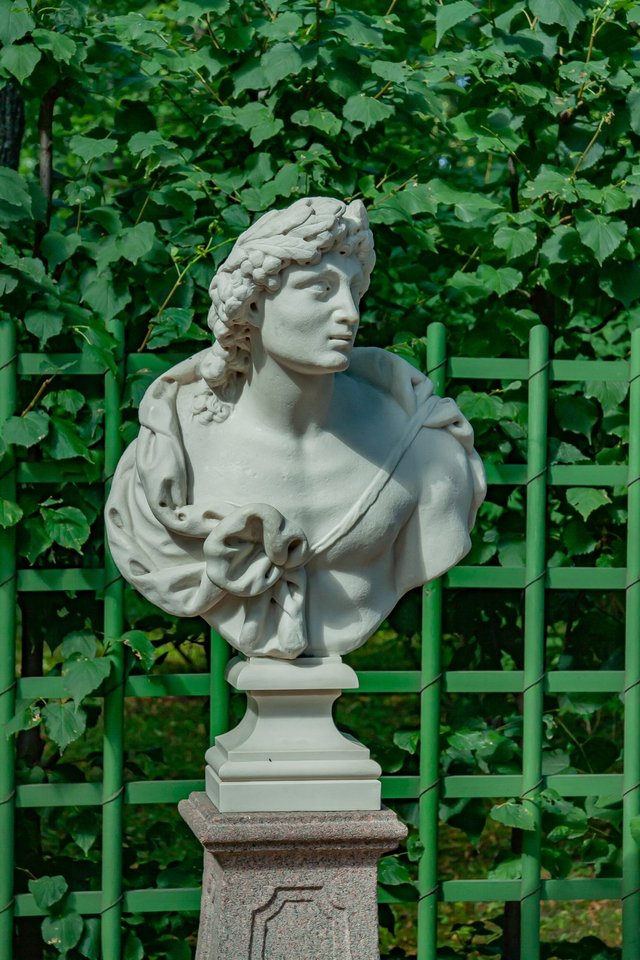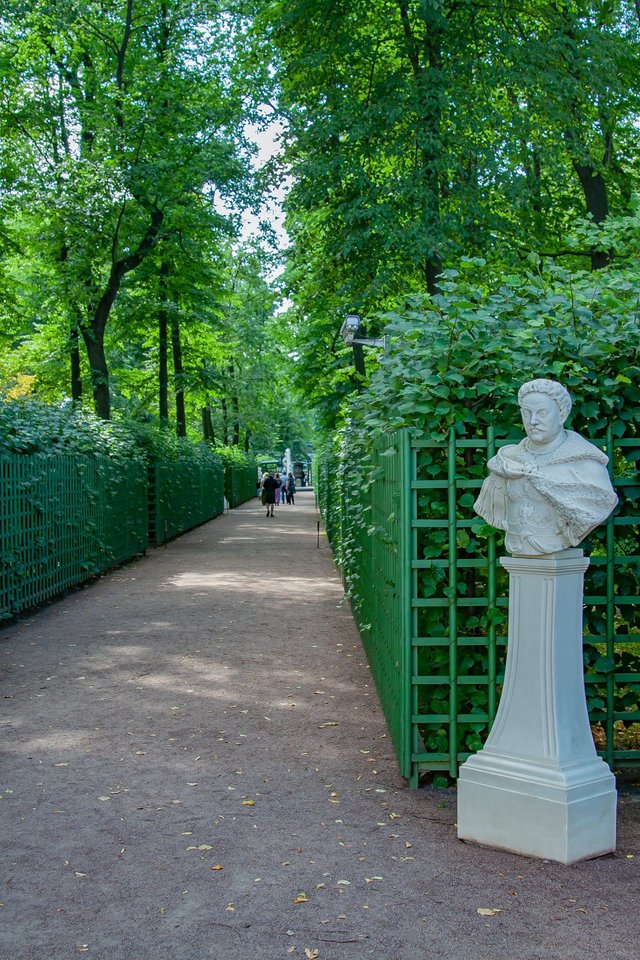Report No126. Summer garden in St. Petersburg (part 2). Отчёт о поездке № 126. Летний сад в Петербурге (2 часть)
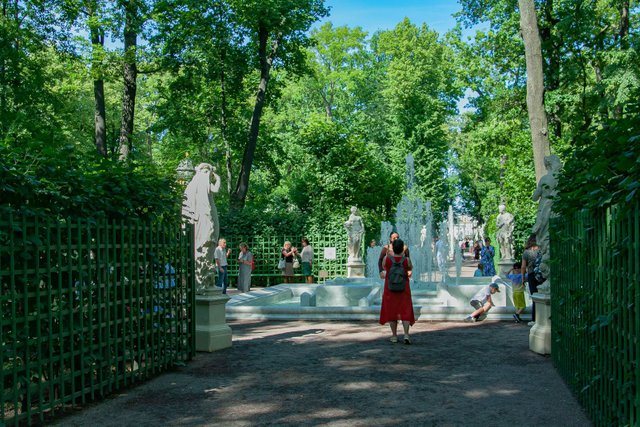
Hello everybody! Today I have for you a continuation of the series of publications about St. Petersburg. The second part of an interesting story about the Summer Garden is next. Let's talk about sculptures, busts and monuments located in the park.
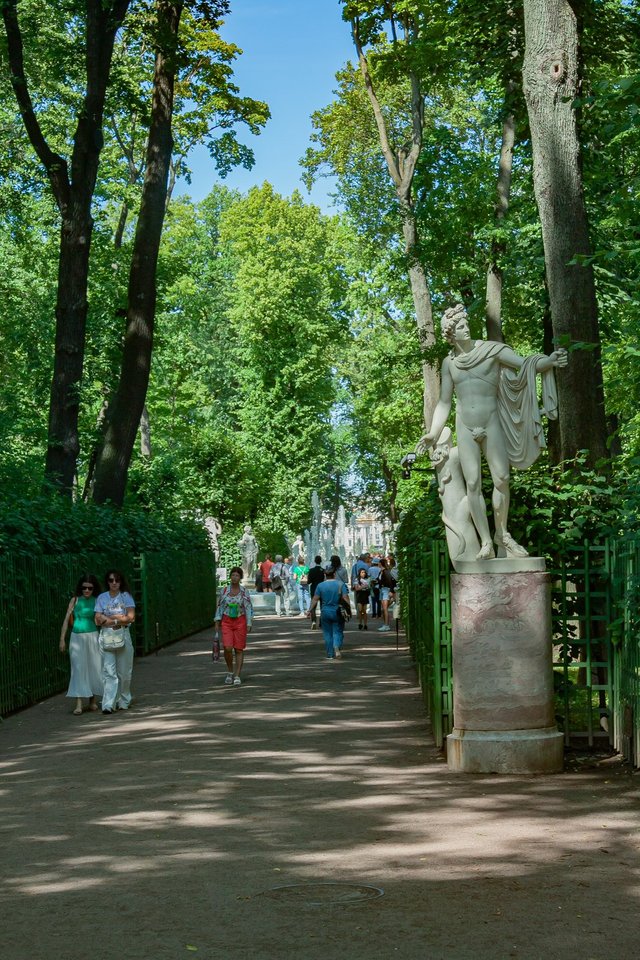
ONLINE HELP: The Summer Garden is a real symbol of St. Petersburg. It can be called the main and most famous park in the city. This is the oldest garden, which was ordered to be laid by Peter I himself in 1704. The most famous Russian and foreign architects and gardeners worked on the project. Today, the park masterpiece is famous all over the world, it is one of the main attractions of the city. The summer garden in St. Petersburg is framed on all sides by water – the Neva and Fontanka rivers, Lebyazhya Kanavka and Moika. The layout of the park is simple: it consists of three parallel alleys with century-old trees.
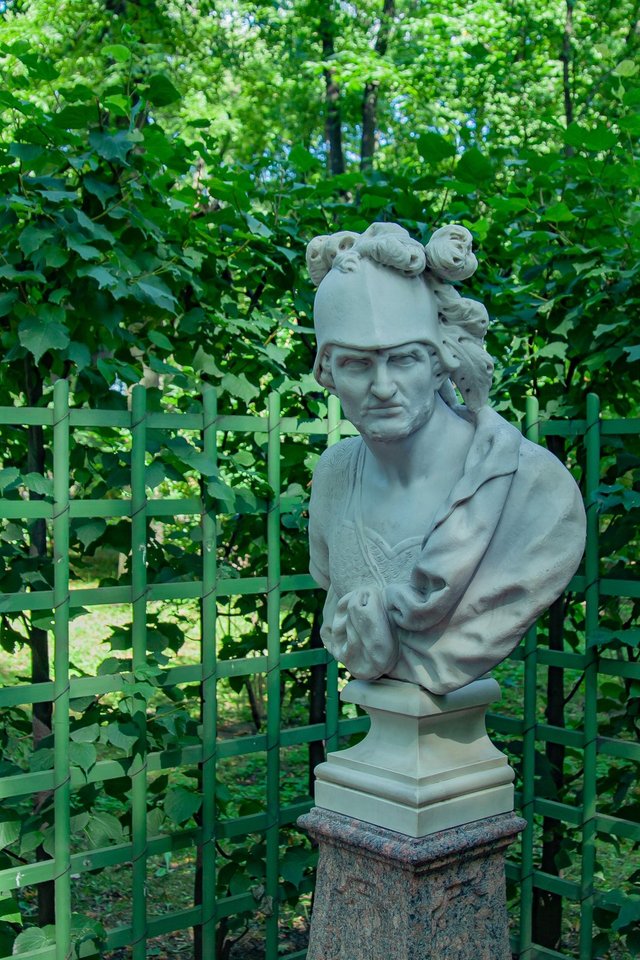
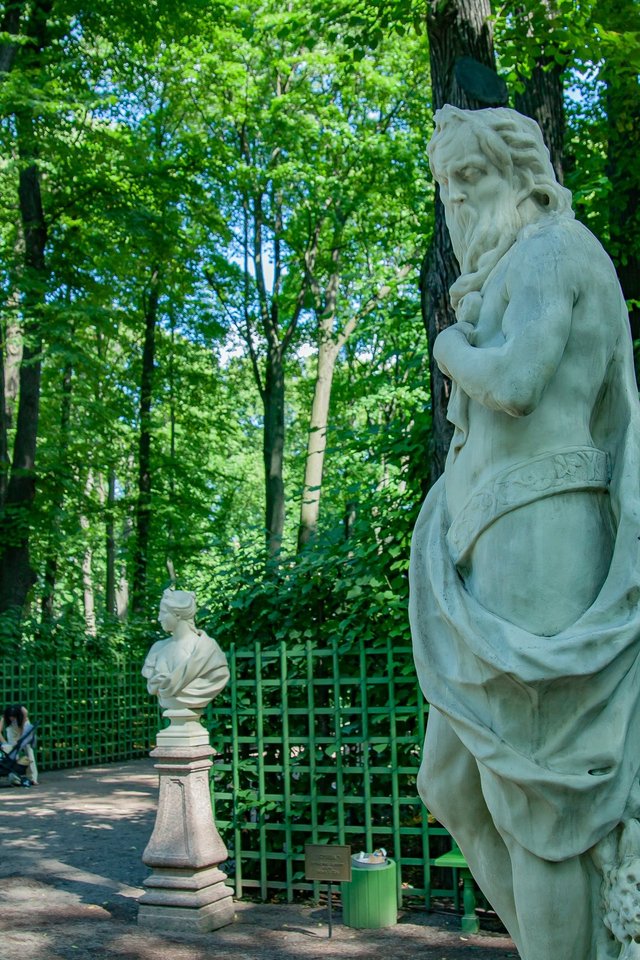
All the local marble busts and life–size sculptures are not ancient originals at all, but are exact copies of their original predecessors. The real ancient sculptures that stood here during the time of the emperors have been sent to the Russian Museum and are part of its collection.
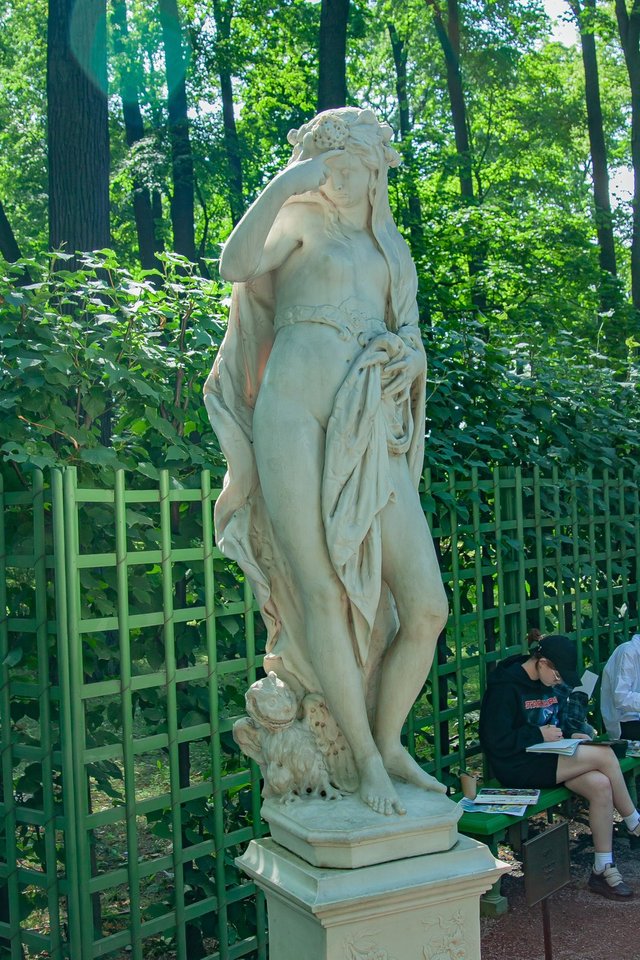

But even these copies are carefully protected from the weather and external influences, because marble is a rather fragile and fragile material. You can admire all the local sculptures only in the summer, as they are carefully packed in special cases for the winter.
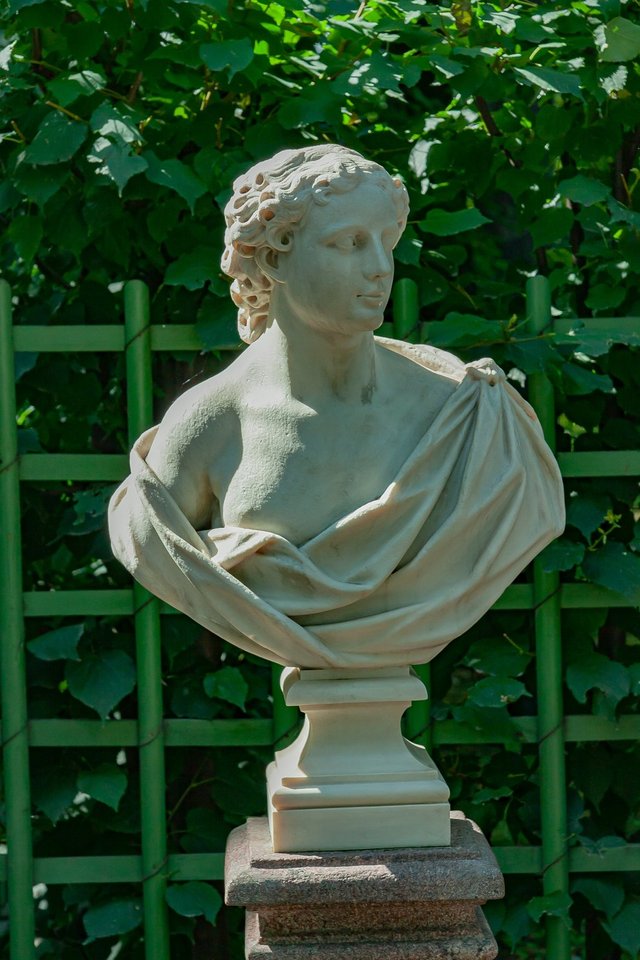
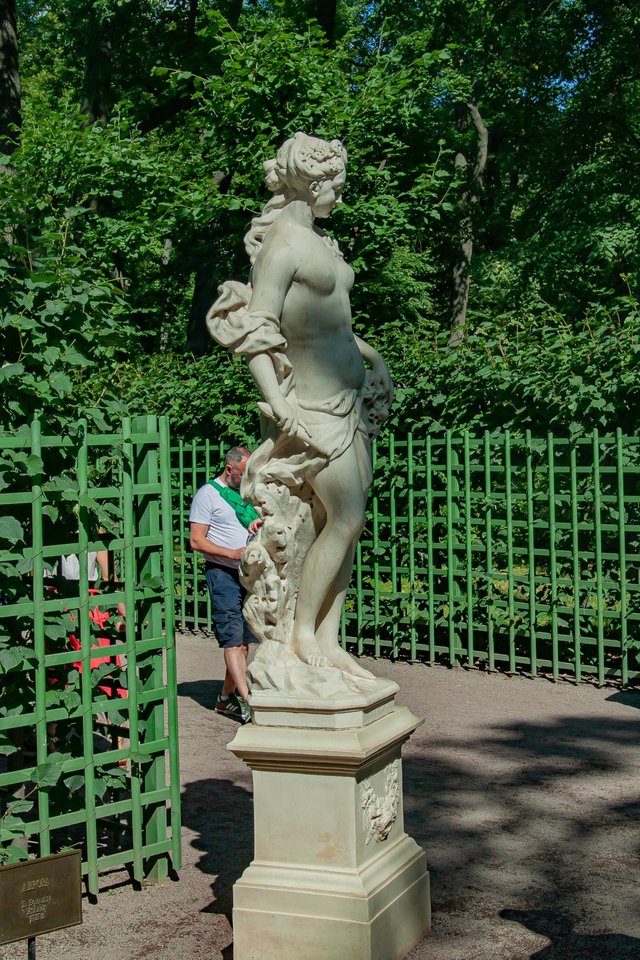
During the siege of Leningrad, when the city was subjected to massive shelling by the Fascist invaders, the Department of Culture decided to bury all the busts and sculptures in a safe place. After the Great Patriotic War, all of them were returned to their former places.
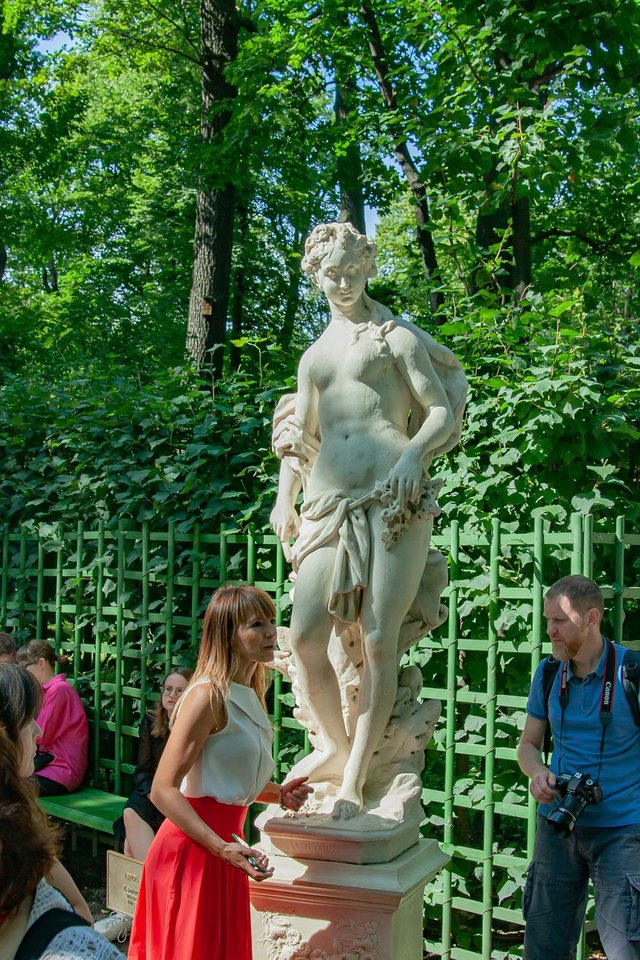
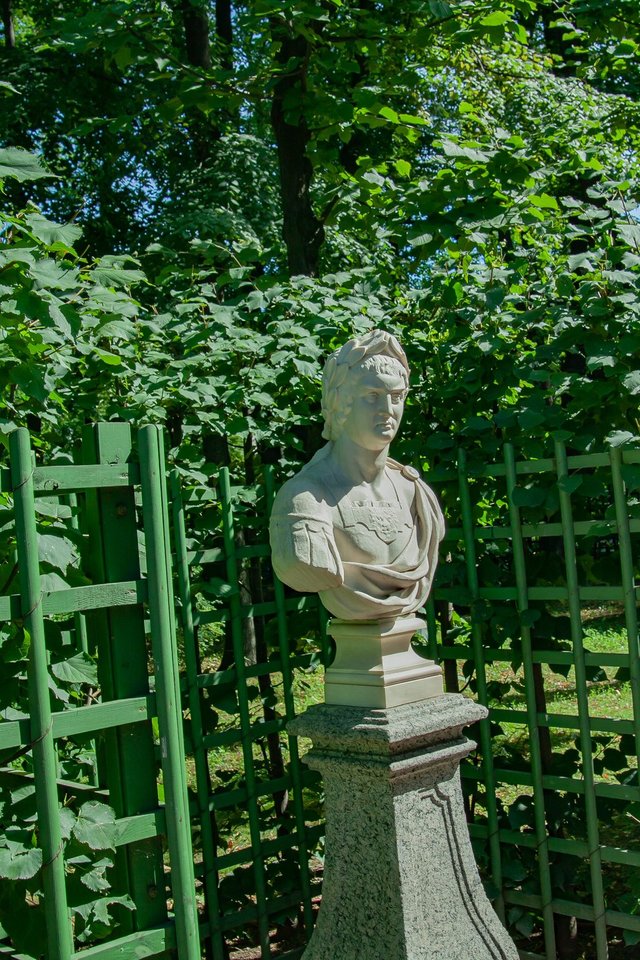
I tried to photograph as many marble objects as possible in the Summer Garden and now I am posting these pictures. But not all the sculptures are here, because there are more than a hundred of them in the park.
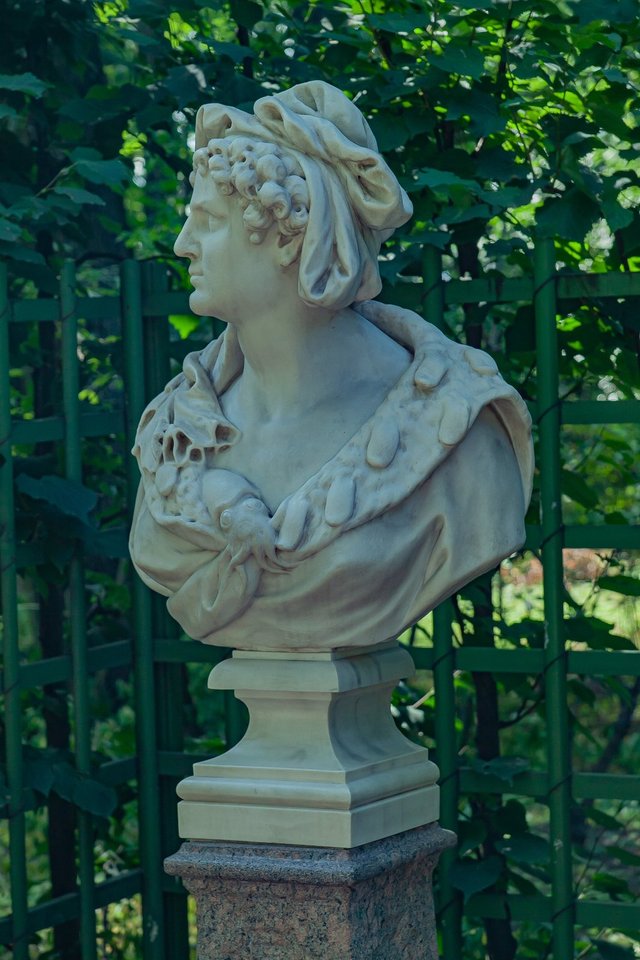
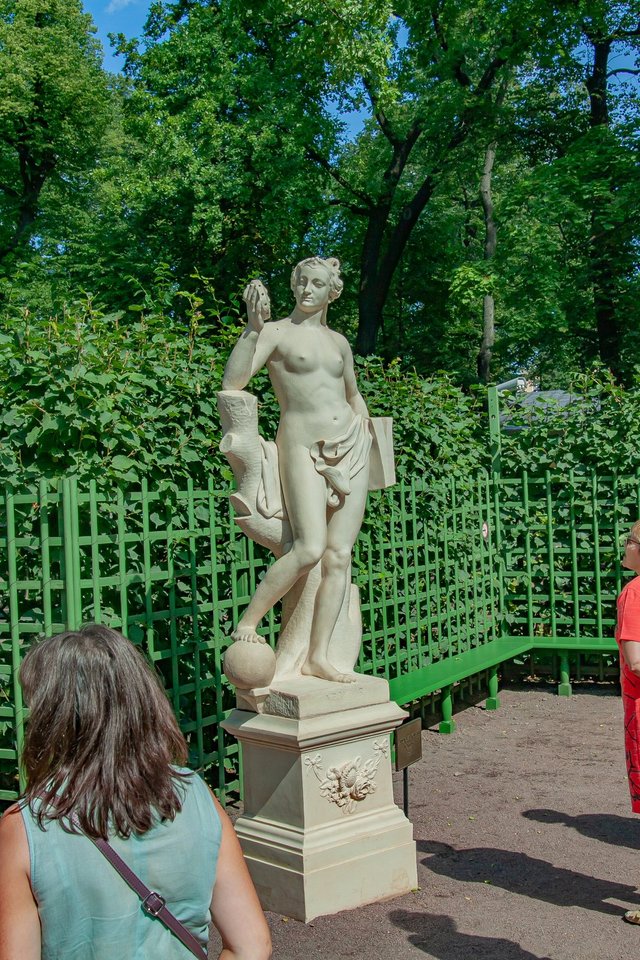
Closer to the opposite entrance to the park (from the Neva side) there is a monument to Ivan Krylov, the famous Russian fabulist. The monument is made of bronze and mounted on an original pedestal. At the base, along the perimeter, there are images of many characters of fables. You can look at this splendor for a long time.
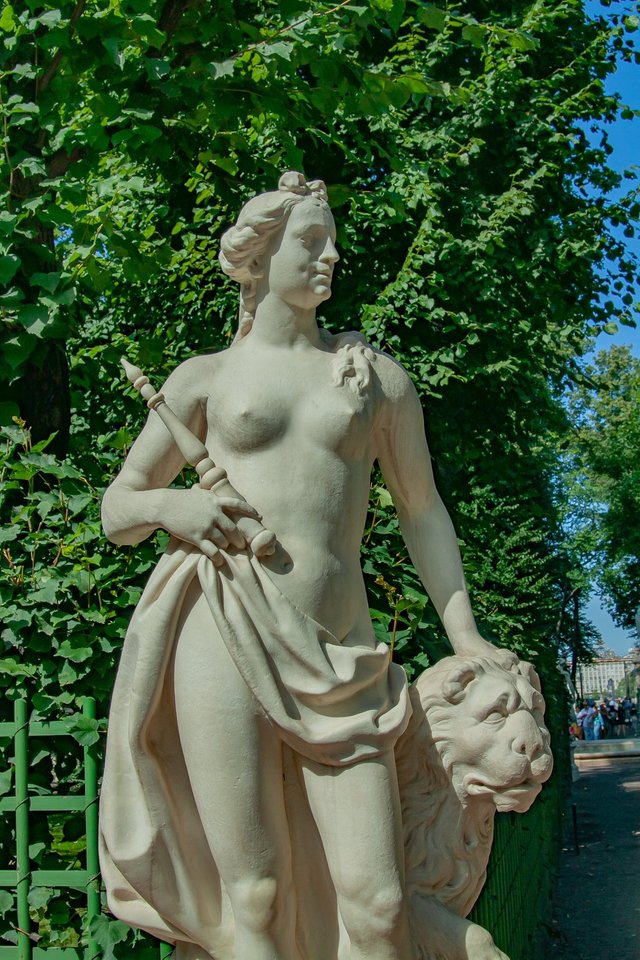
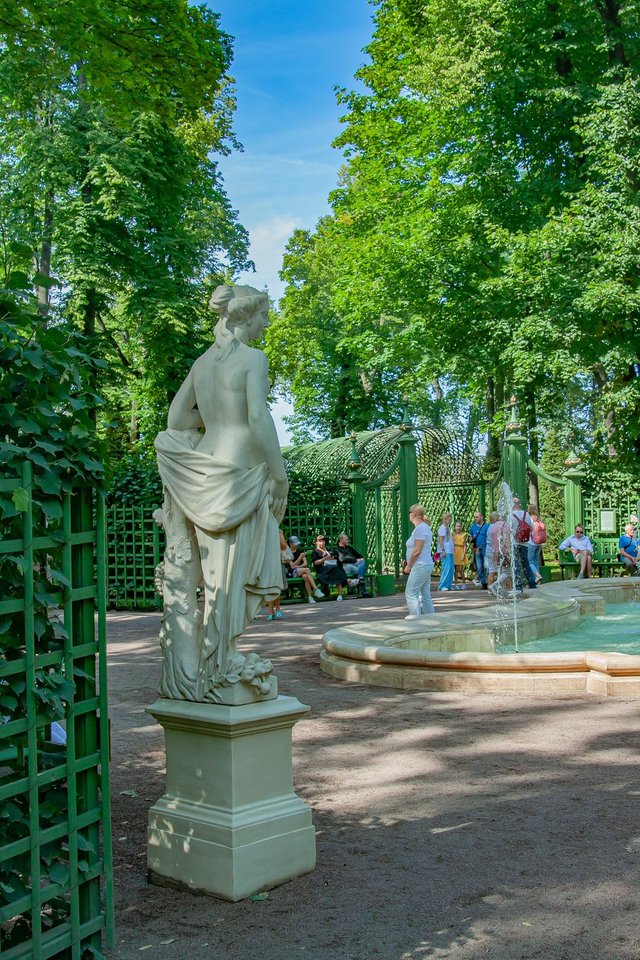
In the following articles I will tell you about the fountains and the museum. We will also go out to a more open part of the park, where many beautiful flowers bloom. And that's it for today!
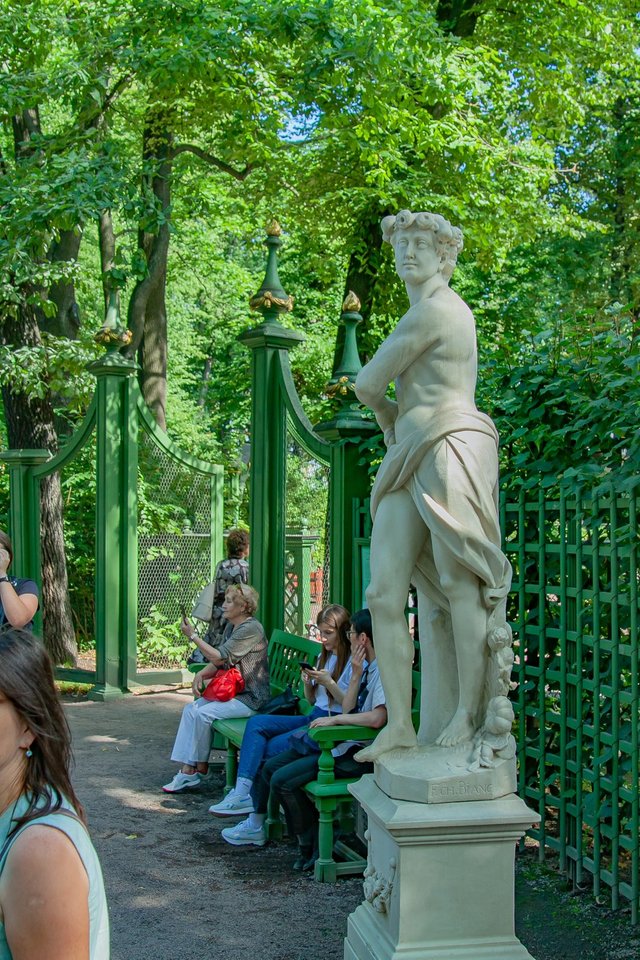
Привет всем! Сегодня у меня для вас продолжение цикла публикаций о Петербурге. На очереди вторая часть интересного рассказа о Летнем саде. Поговорим о скульптурах, бюстах и памятниках, расположенных на территории парка.
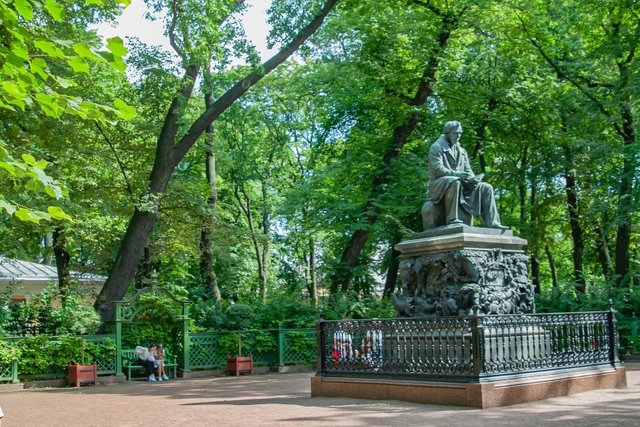
*СПРАВКА ИЗ СЕТИ: Летний сад – настоящий символ Санкт-Петербурга. Его можно назвать главным и самым известным парком города. Это старейший сад, который в 1704 году приказал заложить сам Петр I. Над проектом трудились известнейшие русские и иностранные архитекторы и садовники. Сегодня парковый шедевр знаменит на весь мир, это одна из главных достопримечательностей города. Летний сад в Санкт-Петербурге со всех сторон обрамляет вода – реки Нева и Фонтанка, Лебяжья канавка и Мойка. Планировка у парка простая: он состоит из трех параллельных аллей с вековыми деревьями.
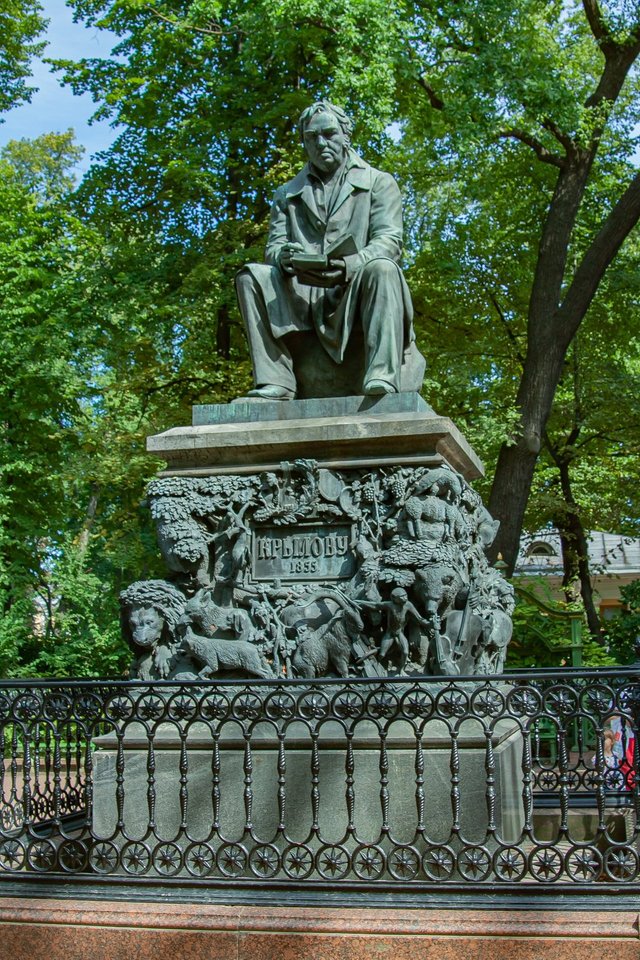
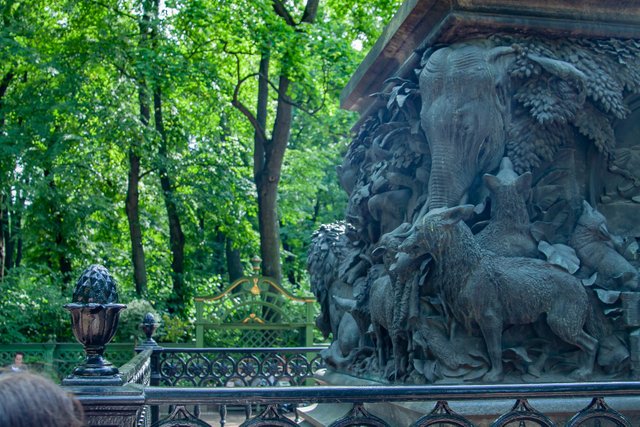
Все здешние мраморные бюсты и ростовые скульптуры – вовсе не старинные оригиналы, а являются точными копиями своих оригинальных предшественников. Настоящие старинные скульптуры, стоявшие здесь ещё при императорах, отправлены в Русский музей и входят в его коллекцию.
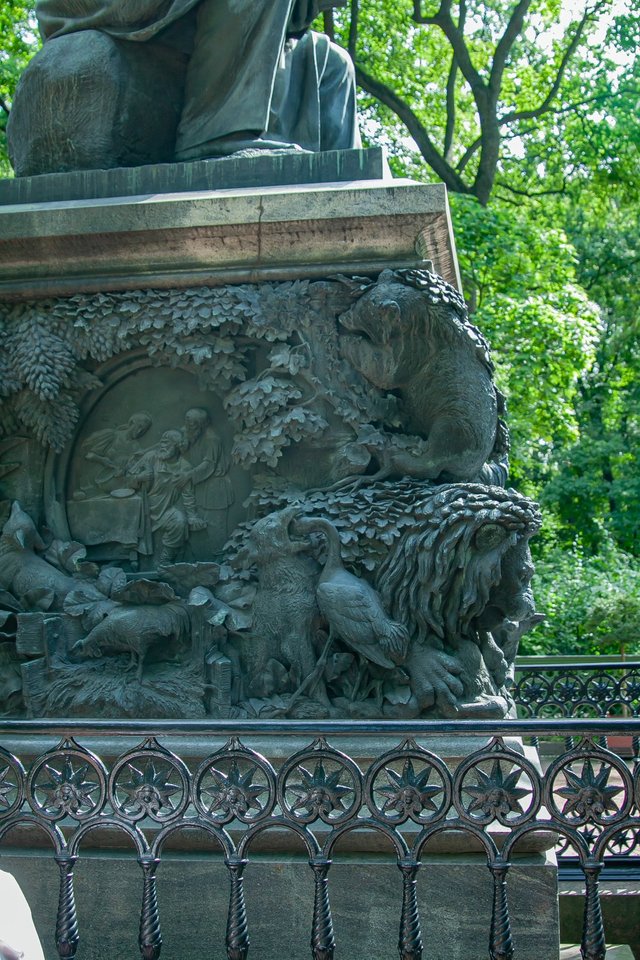
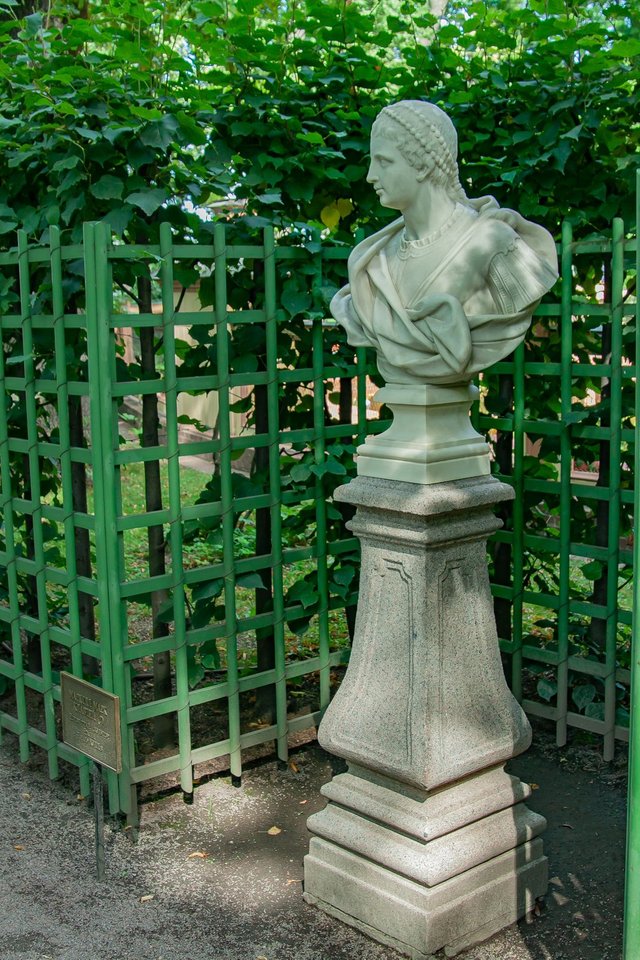
Но даже эти копии тщательно берегут от непогоды и внешних воздействий, ведь мрамор – достаточно хрупкий и непрочный материал. Полюбоваться всеми здешними скульптурами можно лишь в летнее время, так как на зиму их тщательно упаковывают в специальные чехлы.
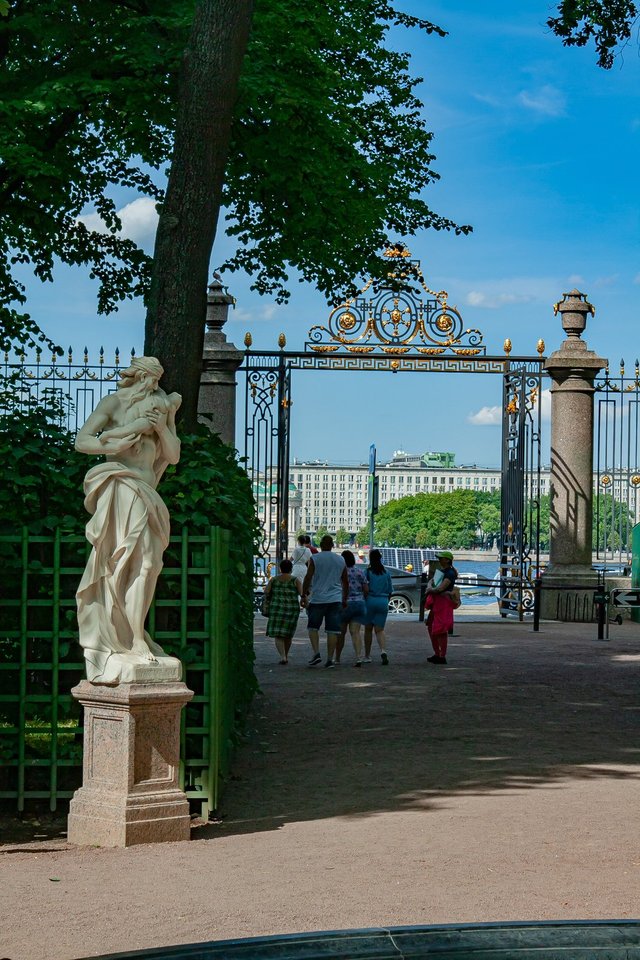
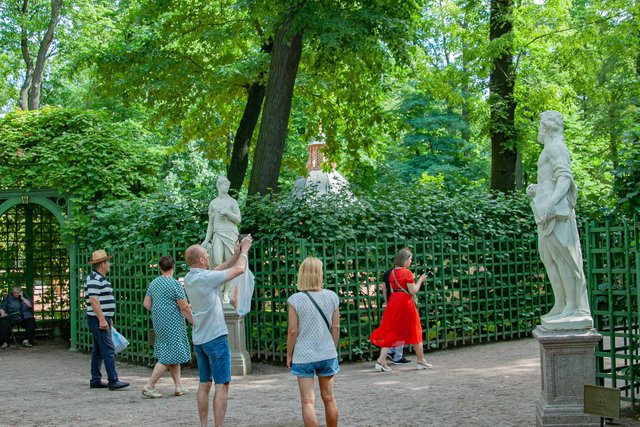
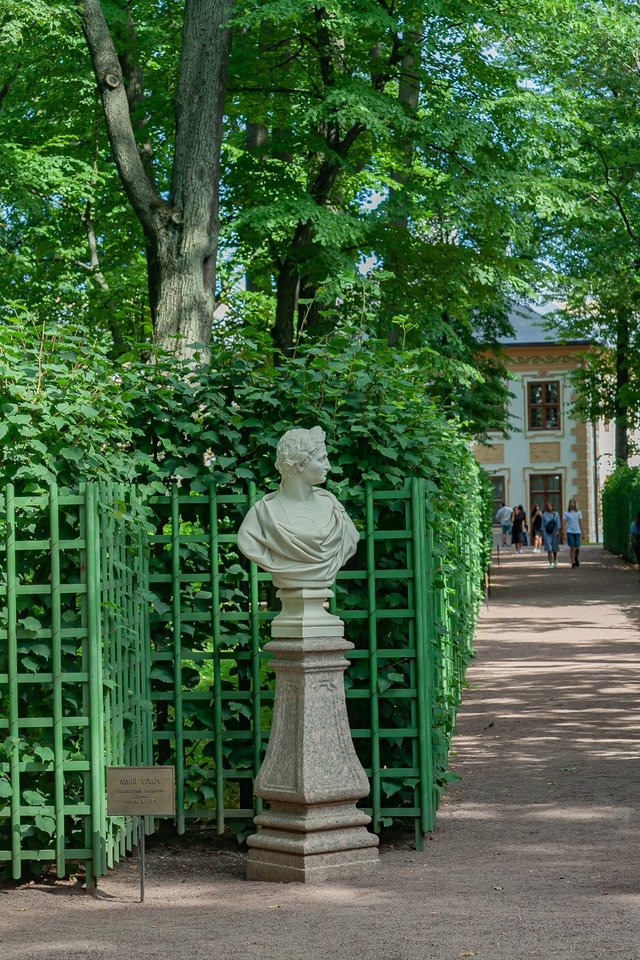
Во время блокады Ленинграда, когда город подвергался массированным обстрелам со стороны фашистских захватчиков, управлением культуры было принято решение закопать все бюсты и скульптуры в надёжном месте. После Великой Отечественной войны все их вернули на свои прежние места.
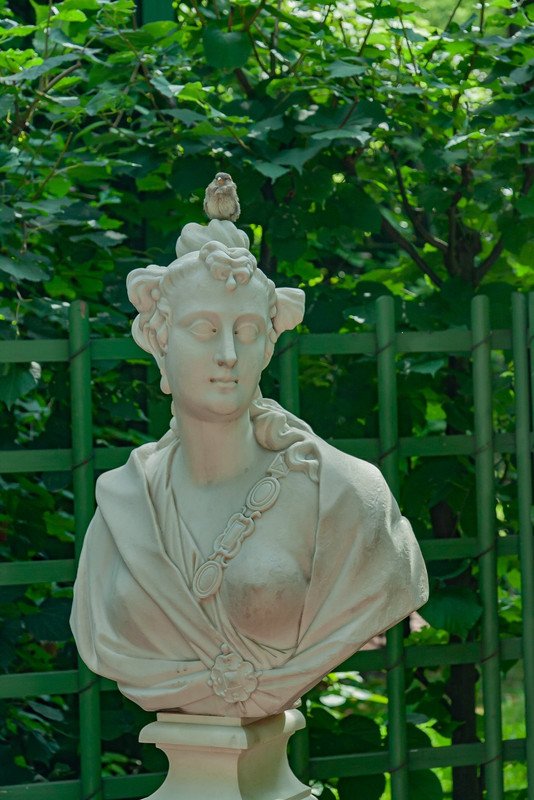
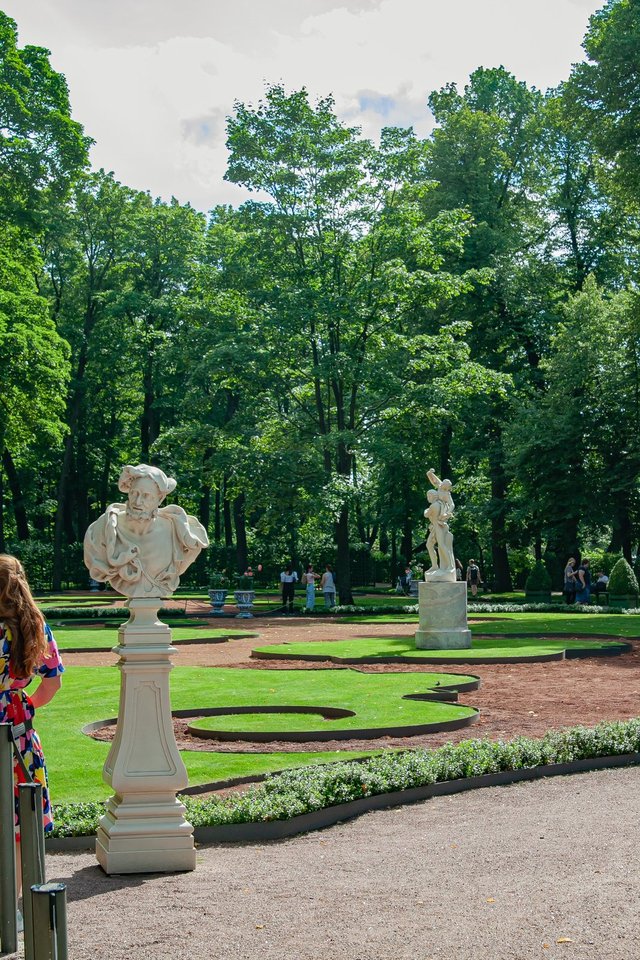
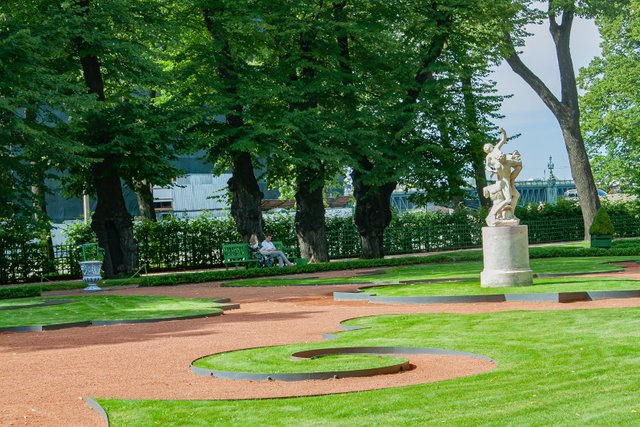
Я постарался сфотографировать как можно болше мраморных объектов в Летнем саду и сейчас выкладываю эти снимки. Но здесь далеко не все скульптуры, ведь в парке их более ста.
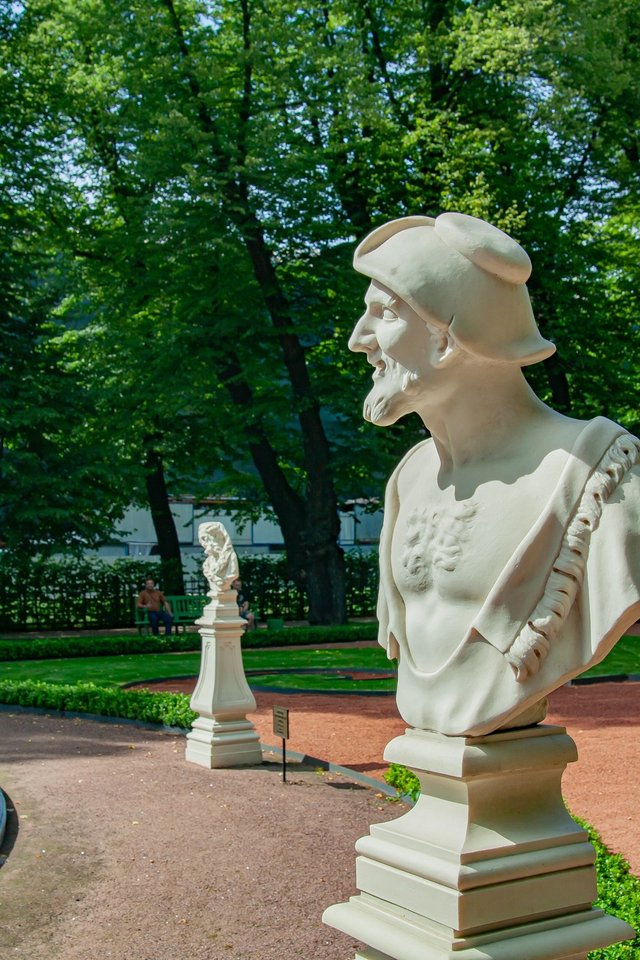
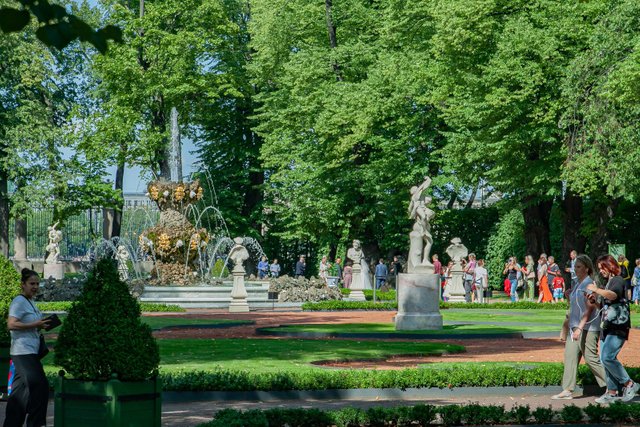

Ближе к противоположному входу в парк (со стороны Невы) имеется памятник Ивану Крылову – известному русскому баснописцу. Памятник выполнен из бронзы и установлен на оригинальный постамент. В основании по периметру расположены образы многих персонажей басен. Можно долго рассматривать это великолепие.
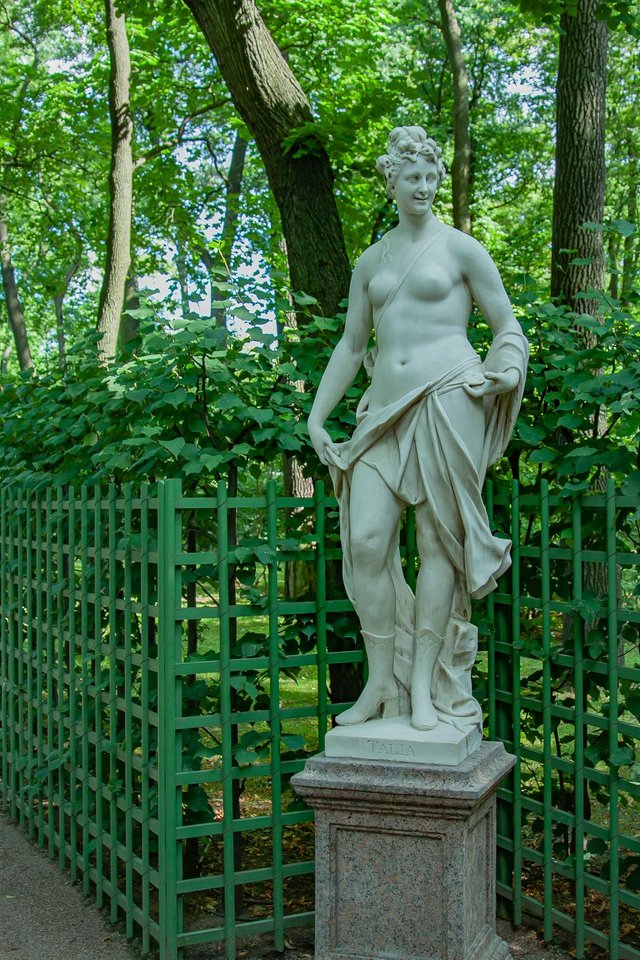
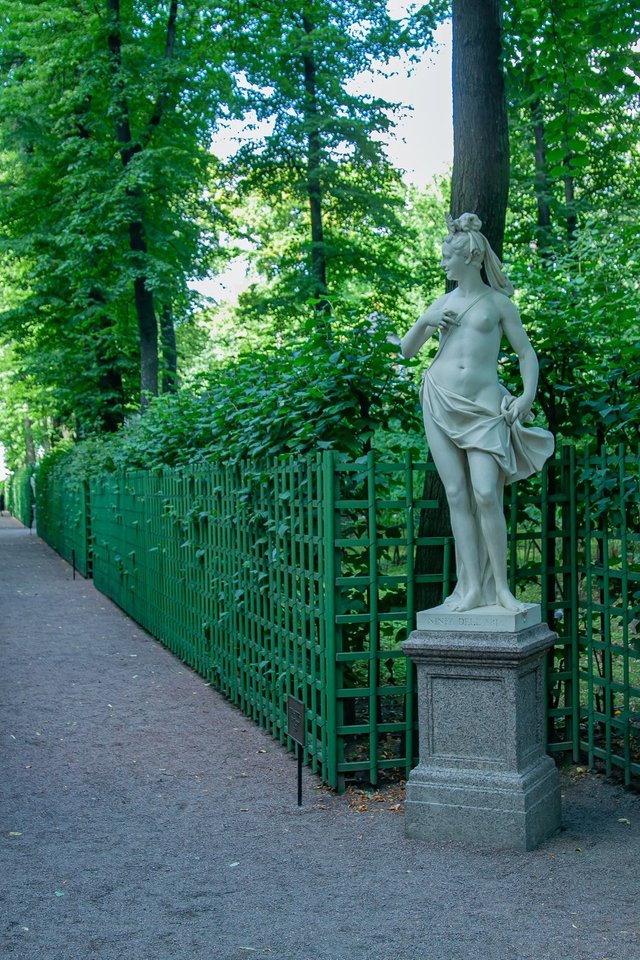
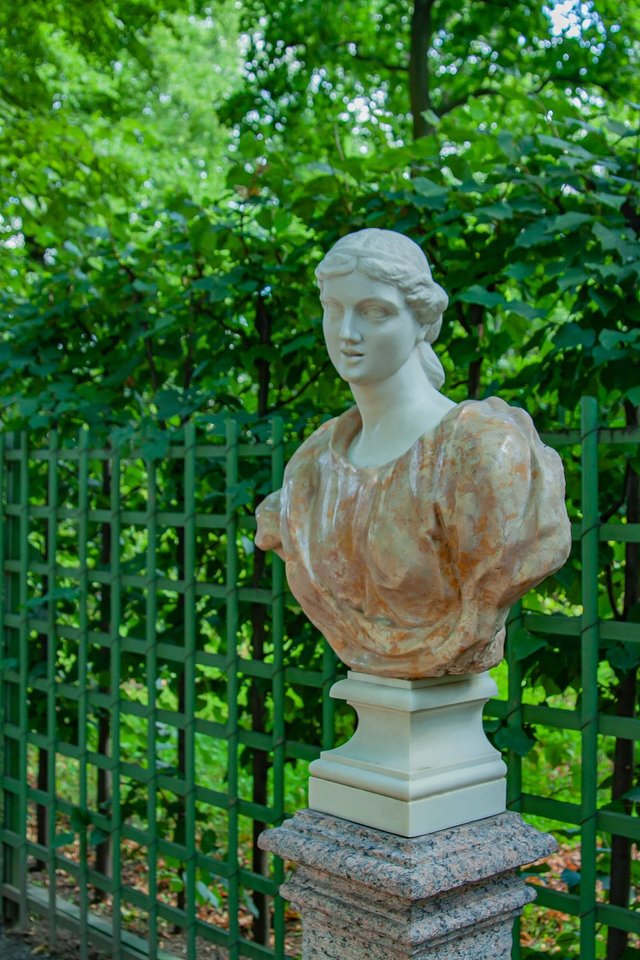
В следующих статьях я раскажу про фонтаны и музей. Также мы выйдем на более открытую часть парка, где цветёт множество прекрасных цветов. А на сегодня у меня всё!
